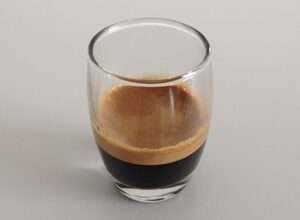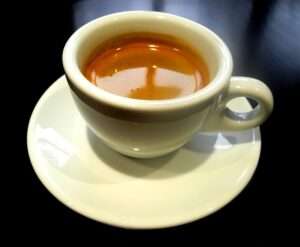Last Updated on 19/12/2021 by Miki
Table of contents
Ristretto coffee is made differently than espresso and it has a strong following amongst coffee enthusiasts. I love espresso and I love how short and concentrated these little shots can be, but this article is about ristretto.
So, what is ristretto coffee? That is the question I’ve come across when I started my journey to coffee discovery a couple of years ago. I had no idea what exactly ristretto was and it sounded like something that only coffee connoisseurs would drink. This article will help you understand the process and the coffee.
This post may contain affiliate links. If you use these links to purchase something, I may earn a commission without any extra cost to you. I would appreciate it if you do so to keep this blog going!

Author: Weetjesman
What is a Ristretto?
The essence of ristretto coffee can be found in its definition: “a short shot of espresso.” A ristretto is a small espresso made with less water than the original espresso. The small volume of water used in this type of espresso intensifies the flavour with the use of a shorter, thicker extraction. The end result is a drink that is stronger in flavour, but shorter in duration. A lot of coffee connoisseurs enjoy the extra taste, but it requires more discipline to make because the coffee needs to be finished before it cools.
A Background on Ristretto
Ristretto coffee is the Italian word for “restrained” and is one of the main coffee brewing techniques. This brewing technique is typically recommended for espresso, and the brew time is much shorter than other techniques. Shortening the brew time helps to reduce the amount of acid and other unwanted tastes that may be present in the coffee. Brewing a ristretto is not that different from brewing a traditional espresso, and takes less time than brewing a traditional espresso. The initial amount of coffee grounds is similar to traditional espresso but is brewed with less water. The water is then quickly forced through the grounds, yielding a stronger tasting espresso with less unappealing qualities. Essentially, this technique is designed to extract as much flavour as possible from the minimal amount of coffee.
The Difference between Espresso and Ristretto

The Difference between Ristretto and Lungo

The Caffeine Content of Ristretto
Caffeine is a naturally occurring stimulant and chemical compound, and it is found in many drinks. It gives people that jolt of energy that they need to get through the day. The amount of caffeine in a cup of coffee will depend on the extraction time and the size of the cup. The ristretto is extracted in a shorter time and brewed in less amount than traditional espresso, so it will have less caffeine than most regular coffees. If you’re looking for a caffeine fix, but want to limit your intake of caffeine, then get ristretto coffee.
How To Make a Ristretto
If you can make espresso, there’s nothing difficult in making ristretto as well! Ristretto is made with less water and by brewing for 15 seconds, rather than the normal 25-30 seconds, which makes it stronger than an espresso, but without bitterness. In order to make a great ristretto, you’ll need a good quality of coffee beans, an espresso machine, a coffee grinder (I highly recommend a burr grinder!) and a coffee tamper just like making a great espresso.
- Grind your coffee beans to a finer grind than espresso with the coffee grinder.
- Fill the reservoir of your espresso machine with filtered water and heat it up.
- Weigh 9g of ground coffee and fill in your portafilter basket.
- Tamp the coffee with your tamper evenly.
- Set the filter in the machine and brew it for 15 seconds.
- You will get 15ml of single-shot ristretto.
Final Thoughts
Why wouldn’t you drink ristretto coffee? There are a lot of reasons why you might not drink ristretto. You might think that it’s not worth the extra time (actually it takes less time to extract the coffee), or the tiny cup means tiny flavour and will barely give you caffeine. But this is not necessarily true. There are a lot of benefits to drinking ristretto and it’s worth trying it at least once if you enjoy experimenting with coffee. We never know ristretto might become your new favourite 🙂
